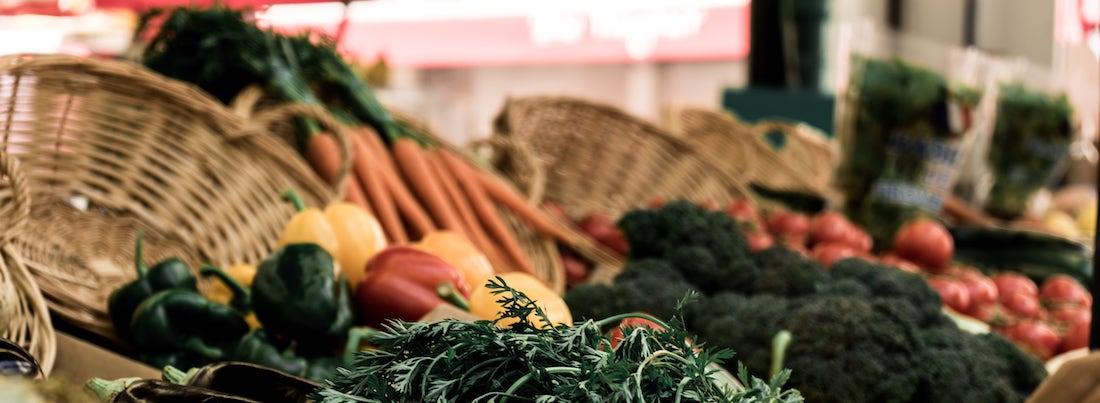Date published: 29.01.2020
2010 – 2019: five major changes in consumer behaviour
How is the consumer of 2020 different from the consumer of 2010? That’s the question we asked ourselves at Shopmium at the start of this new decade. In this article, we shed some light on how consumer behaviour has changed over the last 10 years and the impact for FMCG brands. Focus on five major evolutions.
Consumers have become more responsible and more selective
One of the most significant developments of the last decade is the rise of the conscious consumer. Environmental and social issues have gradually gained ground, encouraging shoppers to consume differently.
Many shoppers are embracing a “buy less, buy better” philosophy. As a consequence, sales of FMCG products are declining. According to Kantar, 18 of the top 20 grocery brands are in decline. When considering the top 50 brands, only 18 are in growth.
The latest Accenture Strategy Global Consumer Pulse Report shows that consumers are no longer making decisions based solely on product selection or price: they’re assessing what a brand says, what it does and what it stands for.
“Consumers are investing their time, money and attention in brands that have a genuine commitment to important principles that they care about – such as health and wellbeing, natural ingredients, environmental sustainability and family connections” says Rachel Barton, Accenture Strategy Managing Director.
Local products are on the rise. More than half of consumers (55%) say they prefer to buy local brands to help support local and small producers according to IRI’s latest European Shopper Insights Survey.
Packaging has also become a hot topic. Olly Abotorabi, Senior Regional Insights Manager at IRI, comments: “There is increasing awareness of the impact that use of plastic in grocery retail is having on the planet, with heart-rending images of whales tied up in discarded fishing nets and floating plastic islands in the ocean circulating regularly in the media. As a result, shoppers are more aware than ever of the environmental impact their purchases can have and are making the connection every time they pick up brands in store.” 73% of consumers say they prefer to buy products with environmentally friendly packaging.
Organic has gone mainstream
Just a few years ago, only a minority of consumers bought organic products. Clare McDermott, Business Development Director for the Soil Association’s certification arm, shared with the Financial Times: “Organic was perceived as something that was niche and nice to have. A food for affluent people, rather than [being] something about best agricultural practice and improving the food we eat.”
However, in recent years, organic has been building momentum and experiencing steady growth. Paul Moore, Organic Trade Board Chief Executive told The Telegraph: “Shoppers perceive organic to be healthy, tasty and are deciding that it is worth the money. The organic message is becoming better understood, and all the evidence we see is it is increasing partly because of the young audience coming into the market.”
According to research from Kantar commissioned by the Agriculture and Horticulture Development Board (AHDB), organic shoppers are willing to pay a premium price up to 30%, but will pay more if they have to.
Beyond organic, there is strong demand for natural and clean label products in both the food and personal care space.

Free from products have invaded supermarket shelves
Free from products have also soared in recent years. They appeal to different groups of shoppers, with many choosing them as part of lifestyle decisions and others for medical reasons.
According to research from Mintel, almost half of adults are choosing to avoid certain foods or ingredients and 39% say they regularly buy free from foods or drinks. Meat alternatives, dairy alternatives and gluten and wheat-free products are the largest categories.
Meat alternatives in particular have experienced spectacular growth.
Lucia Juliano, Head of CPG and Retail Research at Harris Interactive, told The Grocer: “As more free from products are introduced to the market, taste and quality are now comparable with regular products. This means consumers are more inclined to try free from products.”
Alistair Vince, CEO and founder of Watch Me Think, believes that “by 2030, free from will become the norm and everyone will have something free from in their diet – free from sugar, salt, gluten and so forth.” He shared with Bakery and Snacks: “Hopefully there will be a free from product alternative to every product we already have.”
Mobile use has redefined grocery shopping
A decade ago, only 17% of the population owned a smartphone. In recent years, smartphones have become widely available and 85% of the population now owns a smartphone. 95% of smartphones are used every day, impacting many activities such as grocery shopping.
According to Deloitte, every month, 1 in 5 people buy groceries using their smartphone. In 2018, sales of online groceries saw a growth of 9% compared to 2017. Mintel forecasts that sales will grow by 60% in the next few years to reach £19.8 billion in 2023, with online grocery accounting for 10% of all grocery shopping.
Online grocery shopping especially appeals to younger people. 61% of shoppers aged 25-34 say they do some online grocery shopping and over a quarter (27%) say they do all or most of their grocery shopping online.
But shoppers who do not buy groceries online also rely on their mobile phones, in particular before grocery shopping and in-store. Research from InMobi and Decision Fuel shows that 2 out 3 modern grocery buyers use their mobile for cost savings and smart grocery shopping (modern grocery buyers are defined as mobile users who intend to purchase groceries within the next 90 days). Grocery buyers use their mobile to research prices (for 46%), promotions and discounts (for 35%), store locations (for 28%), product info or availability (for 17%) and loyalty programs (for 14%).
70% of modern grocery buyers also use their mobile while they are shopping. A large number use mobile apps, including grocery store apps and couponing apps such as Shopmium. Mobile payment is also on the rise, with some retailers such as Sainsbury’s now offering till-free shopping with in-app payment.

Shoppers have come to value discounters
Over the past decade, discounters have reinvented themselves to attract new customers. Nielsen explains: “Discounters have evolved a great deal from their initial simple model of offering just low price and private label products. In the past 10 years, hard discounters have become more much experimental retailers, trialing new growth tactics and appealing to a broader shopper base.”
Nearly two-thirds of the households now visit an Aldi or Lidl branch at least once every 12 weeks according to research from Kantar Worldpanel. Its most recent grocery market share data shows that Aldi held a 7.8% market share at end of 2019 while Lidl had a 5.9% market share. Their combined market share is expected to exceed 15% in 2020.
The rise of discounters is a significant challenge for the Big Four supermarkets. Their sales have been declining and they are losing market share. In March 2019, The Guardian published an investigative piece titled: “The Aldi effect: how one discount supermarket transformed the way people shops”. In the article, retail expert Richard Hyman explains: “Aldi’s customer profile is now classless. The supermarket is as strong with affluent people as it is with people on low incomes.”
Both Aldi and Lidl have announced ambitious expansion plans, with a large number of new store openings planned in the coming years. As such, discounters should continue to drive growth in the food and grocery market.
In 10 years, a new consumer has emerged. The consumer of 2020 is more responsible buying less but buying better. He wants more organic, natural and clean label products and expects sustainable packaging. The 2020 shopper is also digital, using his mobile phone to buy groceries online and find the best deals in-store. He is likely to visit discounters regularly following their successful rebranding. In order to continue to attract consumers, FMCG brands need to take into account these evolutions.